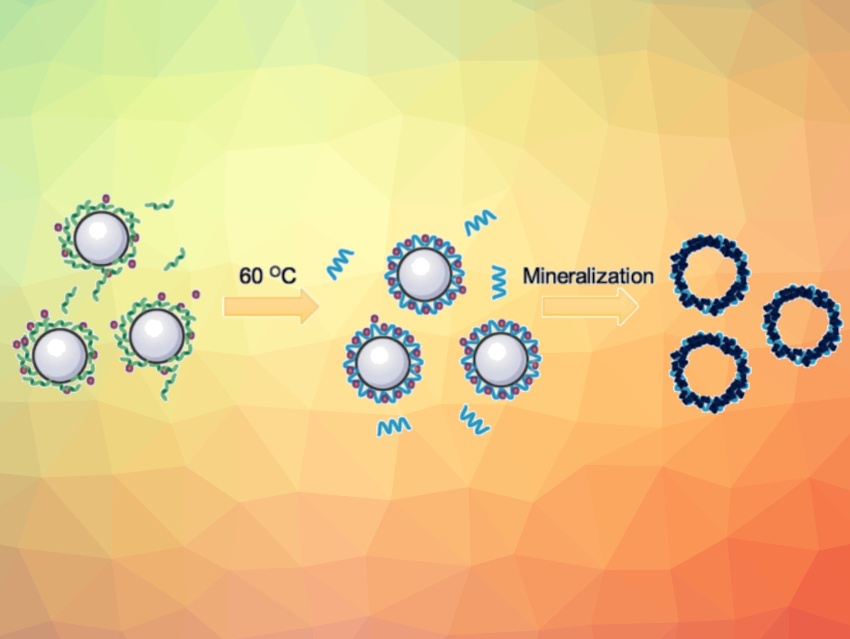Hollow microspheres (HMS) have applications in various fields, e.g., catalysis, sensing, supercapacitors, or drug delivery. Hydrothermal methods and hard-template methods are the conventional paths to HMS materials. However, these approaches have some drawbacks, such as complex operation, high energy consumption, or environmentally hazardous reagents. Protein-directed biomineralization strategies can be powerful methods to prepare structured materials, but it is still challenging to synthesize hollow structures without additional hard templates or matrices.
Lei Han, Qingdao Agricultural University, Shandong, China, and colleagues have found that denatured bovine serum albumin (BSA) can trigger a biomineralization that can be used for the simple, green, and size-controllable synthesis of germanium oxide (GeOx) hollow microspheres (pictured). At a temperature of 60 °C, BSA was denatured, and a compact BSA layer was formed around H2 bubbles in solution. The denatured BSA layer is stable and suitable for anchoring and growing GeOx from dissolved GeO2. By changing the BSA concentration and temperature, various morphologies of GeOx could be obtained.
The resulting GeOx HMS showed potential, e.g., for responsive pesticide delivery in insect guts, H2O2 sensing, or rapid coronavirus COVID-19 detection. This work could open a new path to the biomineralization-inspired synthesis of hollow structures with versatile functions.
- Denatured proteins show new vitality: Green synthesis of germanium oxide hollow microspheres with versatile functions by denaturing proteins around bubbles,
Yanfang Zhao, Xin Liang, Daoyuan Chen, Xuhui Bian, Wanjian Liu, Lei Han,
Aggregate 2022.
https://doi.org/10.1002/agt2.204




